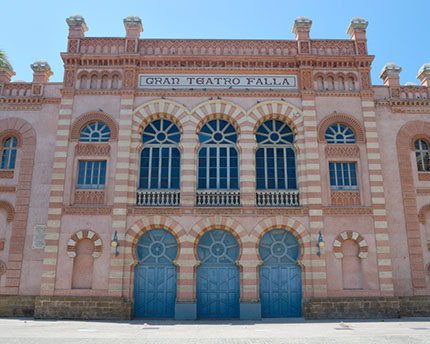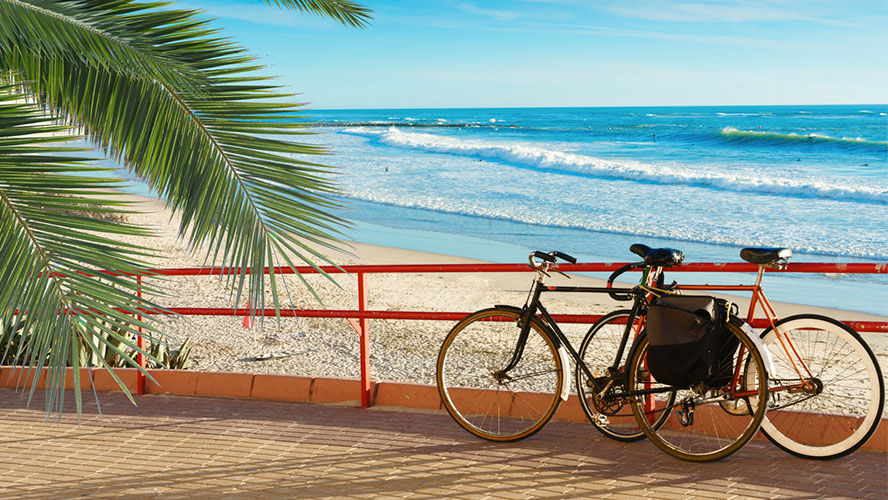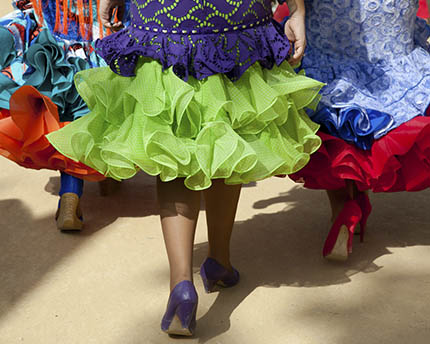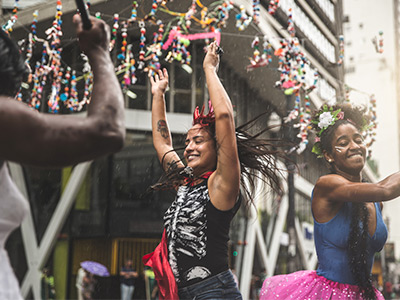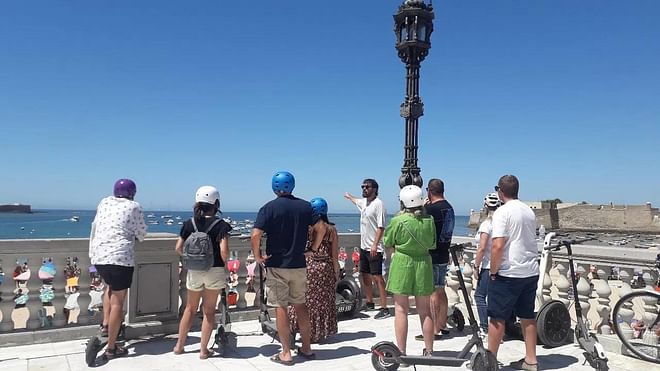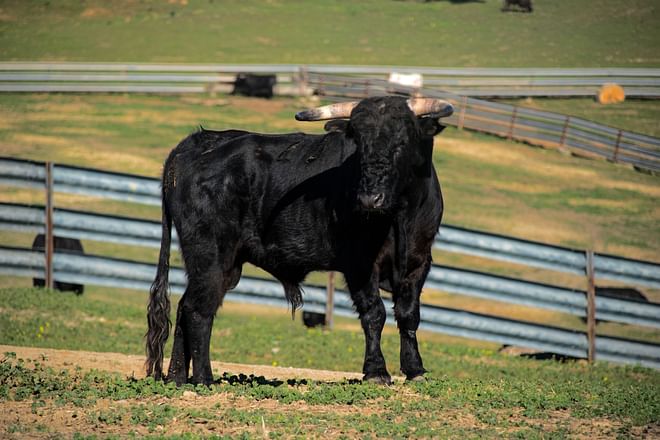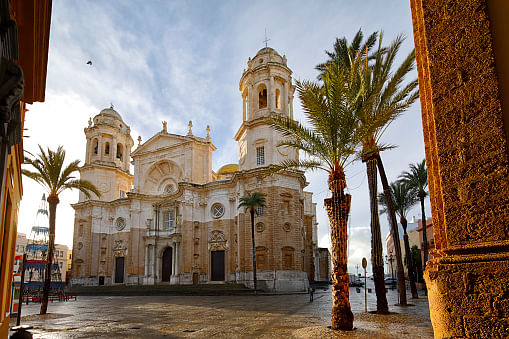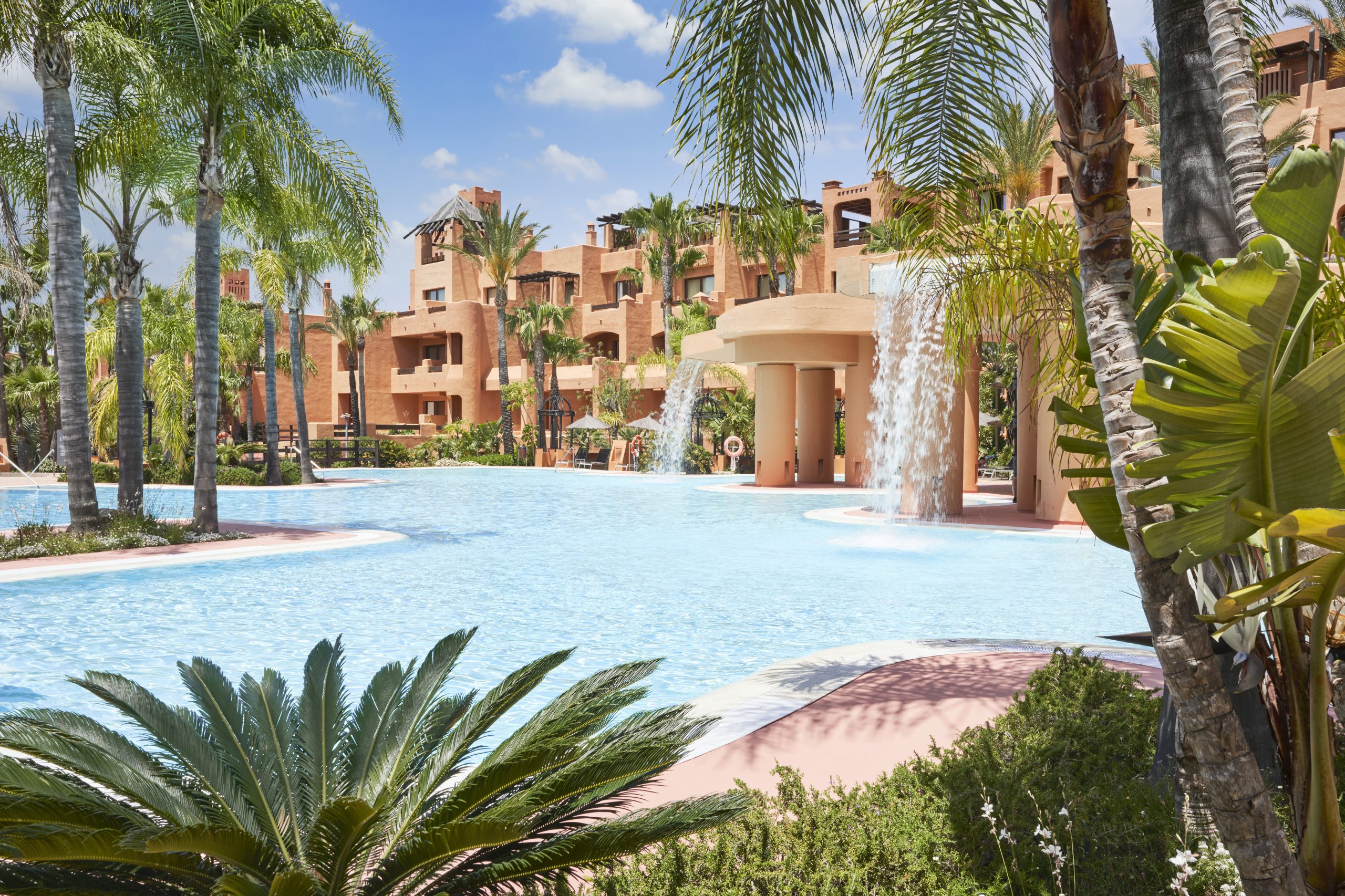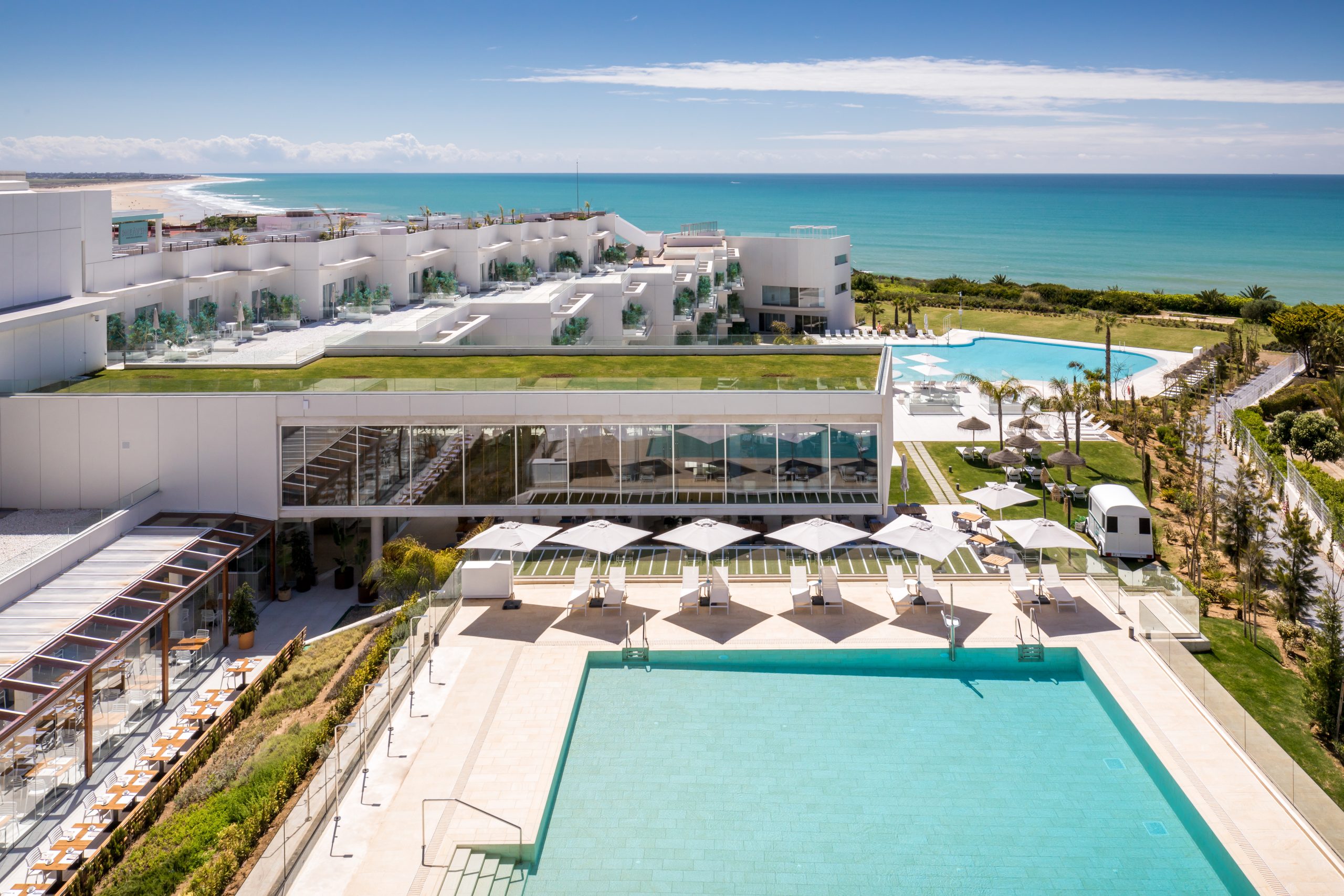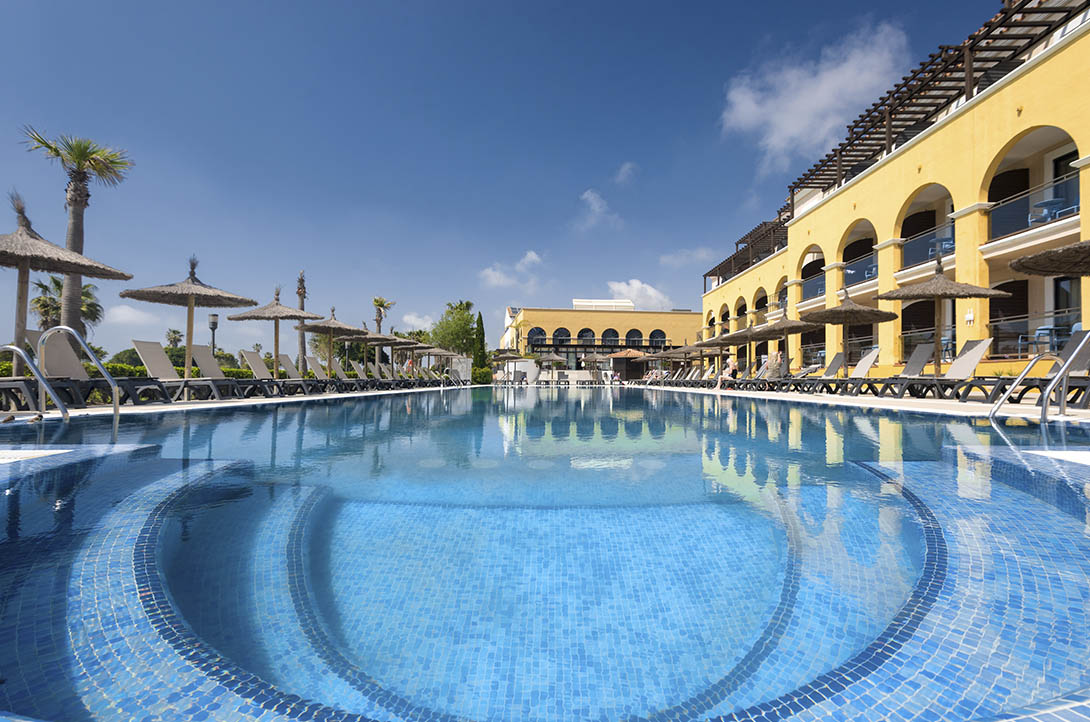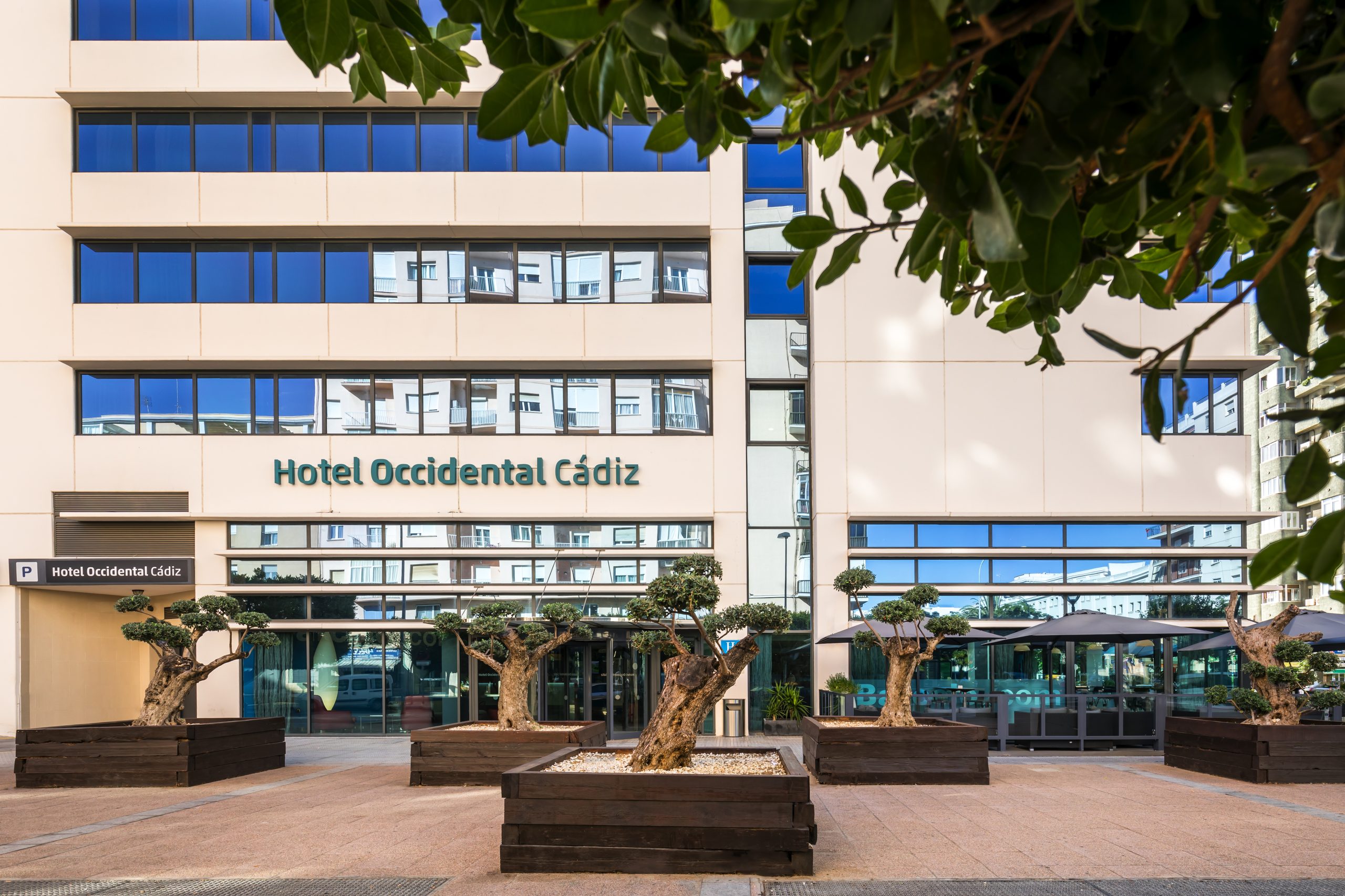Situated on Plaza Fragela, in the neighbourhood of Mentidero, the Gran Teatro Falla stands alongside other historic buildings, such as the Casa de las Viudas, an example of Baroque Cádiz, and the Faculty of Medicine, the oldest faculty of the University of Cádiz. The red building, known by locals as the ‘House of the Coloured Bricks’, never fails to captivate. Construction of the unusual neo-Mudéjar building began in 1884 on the site of the former Gran Teatro de Cádiz, which was destroyed in a fire in 1881.
If one thing characterises Teatro Falla, it is its grand, yet inclusive character. Every year in February the stage welcomes the Carnival by means of a cheerful and entertaining winter festival, injecting its programme—which is already highly varied—with an extra dose of uniqueness. Theatre productions, musicals, opera and dance attract all kinds of audiences.
Gran Teatro Falla: one of Cádiz’s finest treasures
In 1884, on the site ravished by the fire, work began to construct the Gran Teatro Falla. It would take 21 years for the project designed by the architects Adolfo Morales de los Ríos and Adolfo del Castillo to materialise, as budgetary problems caused the project to be halted several times. Finally, a third architect, Juan Cabrera de la Torre, adapted the original plans and completed the building in 1905. The theatre was opened to the public for the first time in 1910, with a performance of a Symphony by Barbieri, and in 1926 it saw its name change from the Gran Teatro to that of the composer Manuel de Falla, the city’s famous son.
Built in neo-Mudéjar style, its characteristic red bricks and arched doorways make it one of the city’s finest architectural treasures. In 1951, plans were drawn up to replace its façade with a neo-Classical one, however, the plan was eventually abandoned. In addition to watching a performance, we also recommend exploring the theatre’s different spaces.
The view from ‘paradise’ and anecdotes about the Gran Teatro de Cádiz
The different floors of Teatro Falla are lined with tiers, which are reached by a stairway that begins in a grand lobby which was renovated in the 1920s. In the upper part of the colourful and luxurious space are the seats known as paraíso (paradise) as well as el gallinero (the chicken coop) which hold a special secret. Those who make their way up to the top are able to get a better view of the frescoes decorating the ceiling, an allegory of Olimpo de los dioses, by Felipe Abarzuza; the same artist was also responsible for a series of paintings adorning the Ambigú bar area. Representing the four seasons of the year, it is said that during the dictatorship, they were censored so that younger audiences couldn’t view them; children were given cardboard visors to block out the figures of semi-naked women.
Capacity and acoustics of Teatro Falla
The horseshoe-shaped interior of Teatro Falla has capacity for 1,214 spectators distributed among its stalls, box seats, dress circle and the ‘chicken coop’. As is the norm, the stalls are the most expensive, offering the best view of the stage, which occupies a length of 18 metres and a depth of 25.5 metres. The boxes are spread out among the seats surrounding the stalls, distributed across the first and second floor. The chicken coop has capacity for 400 people seated on numberless benches and is the cheapest and, like elsewhere, the most boisterous part of the theatre. The theatre’s perfect acoustics are another one of its strong points, aided by a small chamber underneath the stage.
The programme of the Teatro Falla: something for everyone
Variety and quality characterise the programme of the Teatro Falla, a meeting point for theatre and culture-loving locals and visitors. Its boards play host to important theatre productions by Spanish and international companies, as well as classical and contemporary music concerts, dance, opera, cinema, cabaret and comedy. Among many other events, the theatre also hosts the Iberoamerican Theatre Festival (FIT) in October, which means that spectators are catered for in autumn and spring. However, what it is undoubtedly best known for is for being a showcase of Andalusia’s carnival.
The arrival of Carnival in Cádiz’s theatre
The irreverence and joy of the carnival arrived for the first time at Teatro Falla in 1927. The choir of Los Pelotaris and the chirigota (a troupe performing choral folksongs) of the Los Cristerpines Bufos had the honour of filling the grand and majestic stage with merriment. However, it wasn’t until 1949 when the first Cádiz Carnival Competition (COAC) took place. Since then, every February, the event has been one of the most popular and most loved in the city. Their fancy dress parties, which are one of the most famous in Spain, attract all manner of visitors.
A great many associations from Andalusia and other parts of the country participate in this special festival, competing all throughout the month in different categories: choirs, troupes, chirigotas and quartets. The length of the competition doesn’t put off its many followers, who hang on until the very end. The festival comes to a close the Friday prior to Ash Wednesday, after different qualifying rounds.































































